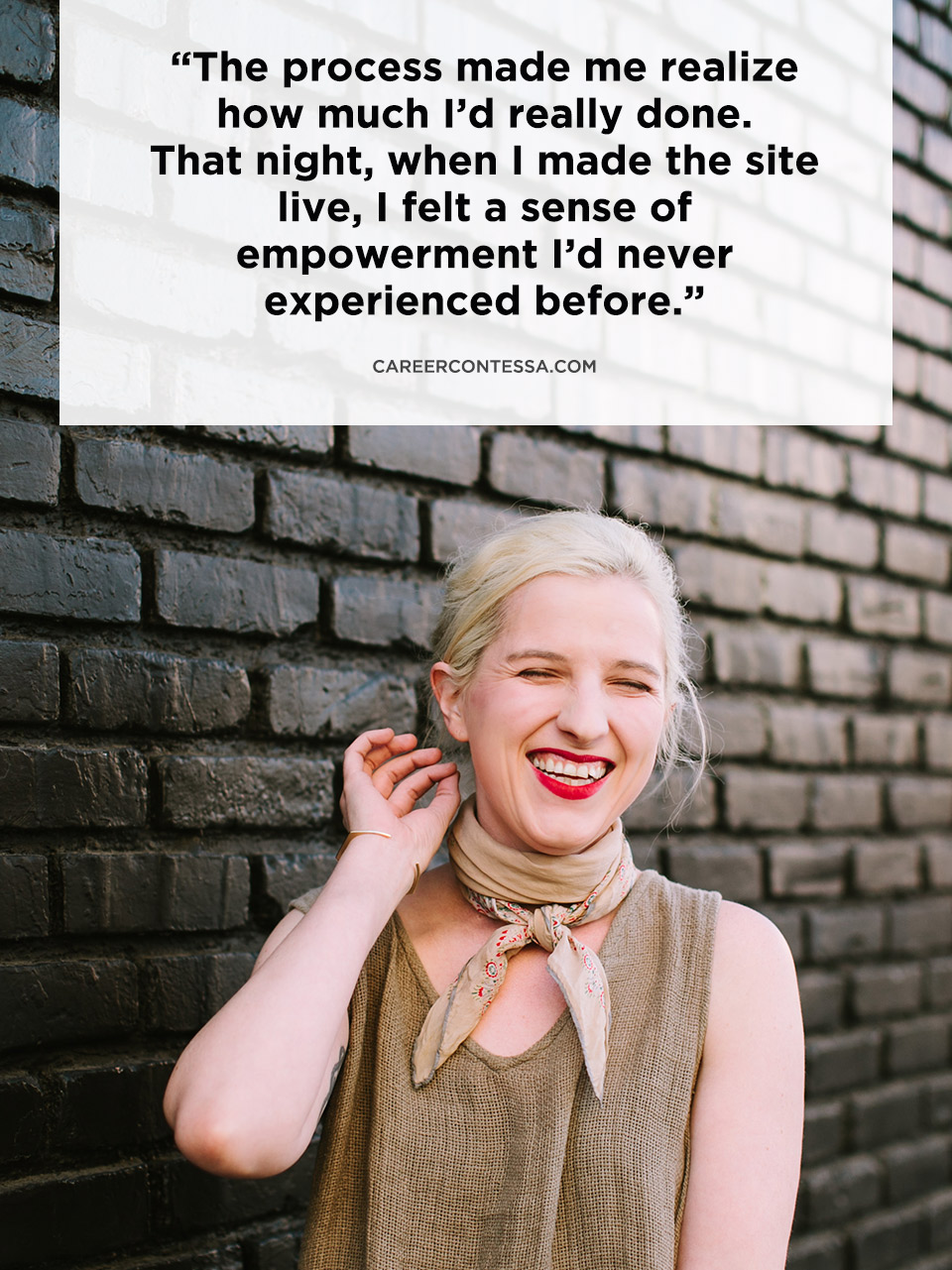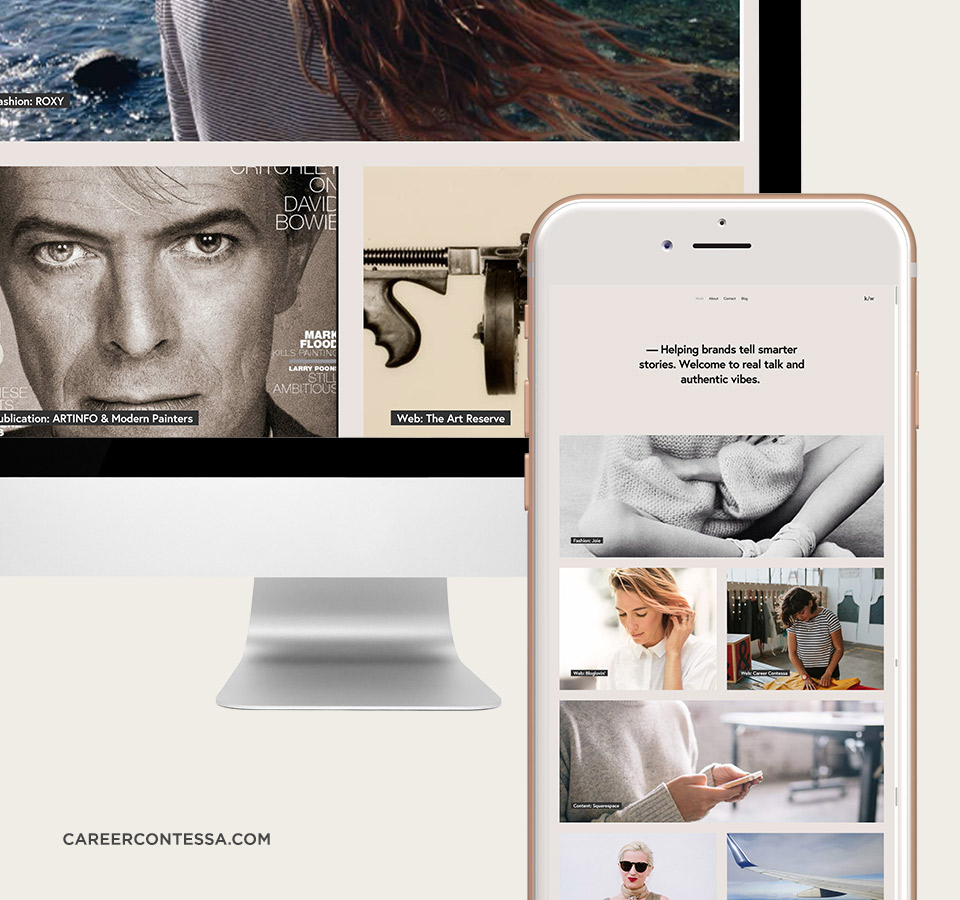I wasn’t one of that 16%, but I had found myself in a situation I’d never seen coming. I had great coworkers, mellow hours, an incredibly successful and supportive feminist of a boss, and the best insurance and perks I’d ever seen—not to mention an income that was double what some of my friends were making. It was, for all intents and purposes, a job that I could have coasted in indefinitely.
But I felt like I was at an all-time creative low. After work, rather than tackling a side project or reading a new book, I’d spend that high salary on expensive dinners out and copious amounts of wine, talking to friends about nothing really, except maybe how unhappy I was at work.
As I scrolled through job boards (sometimes on work hours—remember that whole “not engaged” thing?), though, none of the positions I was qualified for resonated. I didn’t want to keep doing the work I was doing, but I didn’t know what I wanted to do instead.
I Needed to Make a Big Change
“You’re young and don’t have any real responsibilities,” she said, “Why don’t you apply for any job that just sounds interesting to you? You can figure almost anything out, and you can afford to take a pay cut even. What do you want to do if you could do anything?”
It turns out the answer was pretty simple. I’d always been confident in one thing: I love writing. If I could do anything, that’s what I wanted to do next.
The trouble was, I’d only ever freelanced and even then, sparingly. Writing always played a part in my career, often because a boss or coworker realized I was good at it and every company needs a good writer. But it was never in my job description. So how could I make the jump?

TFW You Realize You Need a Portfolio Site More Than a Night Out
Back in 2013, the same year I found myself considering a massive career transition, Forbes reported that 56% of hiring managers are more impressed with a candidate’s personal site than any other platform—and yet only 7% of candidates had one. The expectation that candidates have an online presence has only gone up from there, along with hiring managers’ expectations. When I decided I needed a new job, I quickly realized that being part of the 93% of people without a site was a major problem.
Until recently, though, building a personal site was an opportunity available to only an elite few—the job searchers who had strong experience with web design or those who had enough money to pay someone to do it for them. I was neither.
I reached out to a friend who did work in web design and asked his advice about what I should do in my position. He emailed back instantly with a one sentence answer:
“Use Squarespace.”
He went on to explain that for my needs, it was the ideal solution: inexpensive, plug and play, and aesthetically pleasing (I care a lot about things looking good). If I used Squarespace, they’d take care of everything for me from hosting my site to helping me buy my domain. Plus, he explained, “you also get a free trial, so you can decide if you like it before paying for it.”
I remember thinking: sign me up. Literally.
 My personal site at its finest, complete with all my past project work. Use the code CONTESSA10 for 10% off your ownsite.
My personal site at its finest, complete with all my past project work. Use the code CONTESSA10 for 10% off your ownsite. The Life-Changing Magic of Tidying Up Your Work Life
Once I knew I wanted to go into an editorial role, I set up a Friday night date with myself, a glass of wine, and my laptop. I signed up for a Squarespace trial and settled in to scroll through all the various template options.
Once I’d picked my favorite template, it was time to get down and dirty. On a pad and paper, I scrawled a list of pages I’d need:
- A homepage
- A work section with individual projects that were organized according to type
- An about page
- A contact page
- I also wanted to link to my Tumblr blog where I’d been writing about things I liked for the past few months as a creative outlet.
What I’d done was define myself.
I suddenly felt like I’d taken control of my job search because I had a clear visual history there, ready to present. There were clear patterns. I had obvious specialties that had somehow never felt obvious before. I had clear interests, purpose, and skills that transcended basic job descriptions.
But more than that—the process made me realize how much I’d really done. That night, when I made the site live, I felt a sense of empowerment and experience that I’d never experienced before. Before starting, some part of me felt like I was still 21, fresh out of college and struggling to find work, any work. But now I not only owned kitwarchol.com—I was an independent professional. I had the skills that companies would want, and I had a way of showing them off too.
The Art of Telling Your Own Story
In gathering all my clips and past experience in one place, I realized that my experience across industries was actually an asset. Throughout my career, one theme was loud and clear: I loved working with people to help them create unique brands with powerful voices that were also raw and authentic. And so, I put a tagline on my site, myself, and who I wanted to be professionally:
Helping brands tell smarter stories. Welcome to real talk and authentic vibes.
That was the story that I’d tell in upcoming interviews with recruiters and companies. It was the story in my cover letter when I submitted my resume and portfolio site to Career Contessa. And it was the story I’d tell Lauren over avocado toast one morning, an iPad tucked in my bag with my portfolio site loaded on the screen. It was also the story I’d tell to my feminist, supportive boss when I gave her my notice a few days later. And it might seem familiar to you, too, because it was the story that I’d use as a springboard to hone the voice and tone of Career Contessa as its new Editorial Director.
And It’s a Change Anyone Can Make
Creating your own personal portfolio site is equivalent to changing the game—you’re in complete control of how you tell your story. And it’s precisely this approach to personal branding that can open those annoying metaphorical doors when we’re at a metaphorical crossroads. It’s an exit plan, and it’s a career kickstart. Honestly? It’s whatever you want it to be. And that’s exactly the point.
Ready to start your website? Squarespace makes it easy for anyone to build a home online. When you're ready to subscribe be sure to use coupon CONTESSA10 for 10% off your first purchase.











